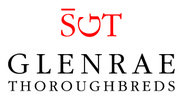Thoroughbred breaking is an incredibly important step in the development of a horse. The way it is handled can make a massive difference to the psychology and performance of the horse in future, for better or worse.
Breaking a horse can be done in a variety of ways. Different facilities and experts have a variety of different opinions on how it should be done. New theories and techniques are developed constantly, with trainers reviewing their methods as they learn more about horses.
Horses Respond To Different Approaches
Moreover, different kinds of horses require different approaches to breaking as well. Particular care is taken when crafting breaking methodologies for thoroughbred racehorses compared with other kinds of horses, owing to the large amount of money invested in breeding thoroughbreds and the high expectations placed on them.
Some have criticised breaking as cruel – and indeed, some methods employed by some equestrians are not particularly kind to horses, but it need not be so.
Doing It Right
The International Society for Equestrian Science has laid out 10 principles as benchmarks that horse trainers should strive to meet to ensure that the breaking is not only kind but successful.
These are not methods but rather ideals upon which breaking and training methods should be built.
The 10 Best Principles
For world-class thoroughbred breaking and pre-training services, contact Glenrae Thoroughbreds now to see how we can help you!
Horses Respond To Different Approaches
Moreover, different kinds of horses require different approaches to breaking as well. Particular care is taken when crafting breaking methodologies for thoroughbred racehorses compared with other kinds of horses, owing to the large amount of money invested in breeding thoroughbreds and the high expectations placed on them.
Some have criticised breaking as cruel – and indeed, some methods employed by some equestrians are not particularly kind to horses, but it need not be so.
Doing It Right
The International Society for Equestrian Science has laid out 10 principles as benchmarks that horse trainers should strive to meet to ensure that the breaking is not only kind but successful.
These are not methods but rather ideals upon which breaking and training methods should be built.
The 10 Best Principles
- Be cognizant and careful to regard human and horse safety at all times.
- Accommodate and respect the nature of horses and their ethology by giving them what they need to feel safe and comfortable.
- Know the right methods of desensitising horses and don’t overwhelm them by flooding them with stimuli.
- Operant conditioning should be applied with care, making every effort to avoid punishment and emphasise positive reinforcement.
- Understand that horses have varying emotional states that should be catered to with care.
- Understand and cater to horses’ cognitive and sensory capabilities by not overwhelming them with information.
- Classical conditioning should be applied correctly by understanding how horses form associations between stimuli and by preferring a light touch.
- Training or breaking should be shaped appropriately – in small chunks - in order not to overwork or overwhelm the horse.
- Signalling and cueing should be carefully constructed and used properly to ensure that the horse understands fully.
- Encourage the horse to achieve good posture and carriage through gentle persuasion rather than nagging or force – all while respecting its natural self-carriage.
For world-class thoroughbred breaking and pre-training services, contact Glenrae Thoroughbreds now to see how we can help you!

 RSS Feed
RSS Feed